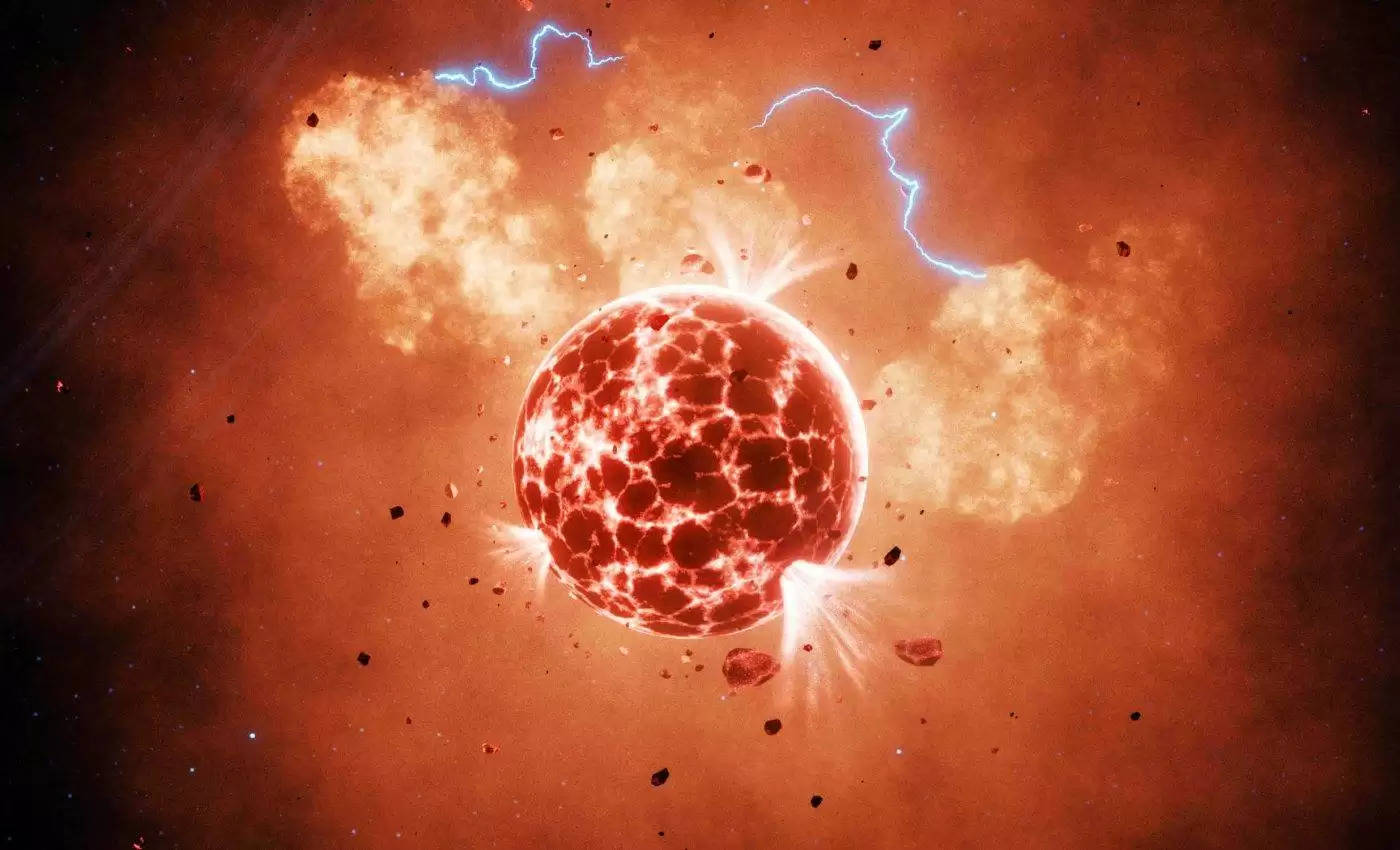A moon like this too! 635 light years away from Earth, flames do not come out cool on this moon, read full details here

Science News Desk – Astronomers have discovered a mysterious moon located just 635 light years away from Earth. This moon is full of volcanoes. Huge clouds of sodium have been found on this moon, indicating volcanic activity. This moon orbits an exoplanet called WASP-49b. This exoplanet revolves around a yellow dwarf star WASP-49.
How was it known that there are volcanoes on this moon…
WASP-49b is a gas giant, which means the chances of there being a volcano here are slim to none. The presence of sodium clouds also does not match the orbit of the exoplanet. In such a situation, scientists came to the conclusion that WASP-49b has a rocky, volcanic moon. According to astronomer Apurva Oja of the California Institute of Technology (Caltech), ‘We think this is very important evidence. This cloud is rotating in the opposite direction, whereas according to physics, if it were part of the planet’s atmosphere, it would rotate in the other direction.’
Why are moons not found outside the solar system?
It is believed that there are innumerable moons in our galaxy. More than 300 moons have been discovered, compared to eight planets in our solar system. It is extremely difficult to discover moons outside the solar system. Exoplanets are very difficult to spot and their moons are too small to be detected. A 2017 research paper suggested that WASP-49b has a thick layer of sodium in its atmosphere at much higher altitudes than its clouds. In 2019, Oja and his colleagues said in a research paper that this sodium originated not from an exoplanet, but from an exomoon orbiting around it. This moon is even more volcanic than Jupiter’s moon Io.
How was this moon discovered?
Oja and his team used the European Southern Observatory’s ‘Very Large Telescope’. They found that the sodium cloud does not exist continuously, but appears to rotate at irregular intervals and disappear behind the exoplanet and star. Neutral sodium becomes photoionized within minutes, meaning it cannot remain around the star for long without becoming charged. Since the sodium the team found is neutral, it means it is constantly forming.
The team used computer modeling to determine that the observed signal was most consistent with a volcanic exomoon orbiting WASP-49b, which orbits approximately once every eight hours. Since it is so close to its planet, this moon is likely to fall on WASP-49b one day. The results of the new research have been published in The Astrophysical Journal Letters.

